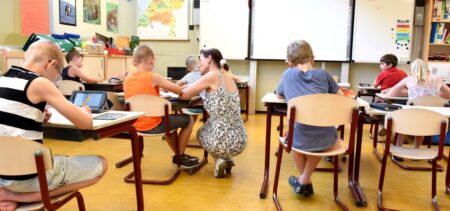Although many schools have become virtual due to coronavirus, open online courses that can benefit tens of thousands of learners simultaneously have been discussed in recent years, all over the world.
Today, large-scale efforts to utilize technology in support of online learning are emerging and evolving quickly. Still, unequal access to virtual lessons amid COVID-19 threatens to deepen the global learning crisis. To put it in numbers, according to Unicef, in 71 countries worldwide, less than half of the population has access to the internet. However, governments are using online platforms to deliver education, while some schools remain closed. Because reopening schools may not be a great idea for all.
So, is this crisis an opportunity for policy-makers to learn from each other and try to build back better? It certainly looks so. But what are the promises and challenges of online education?
5 promises
Speed and collaboration
Countries are trying to provide access to digital learning content as fast as possible, from multiple sources. Most of these resources are free and open, as governments are digitizing already existing content at scale. Moreover, online education promotes peer-to-peer interaction and a lot of collaborative work.
The diversity of media
Online learning isn’t the only option in some countries, as radio, television, and texting are also being used to support access to remote schooling. It is essential to have a diversity of media where students don’t possess other technologies at home.
More teachers
Streaming technology and virtual classrooms are not new, but when it comes to covering the shortage of teachers in some specific subjects, they are particularly useful. In addition to live classes, teachers could provide videos and learning materials that could be available to students 24/7.
Supporting at-risk students
Nowadays, it’s easier for students at risk of dropping out of school to be supported and benefit from virtual classroom technologies. The advantages of making qualified teachers available to all students come down to supporting at-risk students and decreasing the number of students who might drop out.
Reaching distant populations
For large countries with dispersed populations, turning to low-cost and innovative virtual learning solutions from social entrepreneurs is benefiting thousands of students.
5 challenges
The lack of equity
Educational technologies are known for their ability to close the digital divide and offering possibilities to all learners, but, in practice, the opposite might occur: ed-tech can cause a lack of equity.
Underperformance
Recent studies show that virtual schools under-perform regular face-to-face schools. However, teachers and students all over the world are adjusting to the new normal of mixing online courses with face-to-face classes.
The lack of social aspects
Learning is a social activity. And many students have reported missing in-person interaction with their instructors in the past months. It’s also important to consider the fact that schools and daycare centers provide not only access to proper education but also a supportive environment for children and students.
Low engagement
One of the challenges of remote learning is the low engagement of students. Research shows that courses need to be engaging and interactive to retain learners.
The lack of resources
Many students aren’t able to connect to their online classes due to a lack of computers, stable internet connections, or support at home.
Conclusion
The global school closures over the last months affected more than a billion children worldwide. And despite all the promises and challenges, education systems are making an effort. But the questions remain: will we see a growing market for online education? Will the crisis lead to a more robust response system? How quickly will schools move online when needed and go back to normal once it is possible?




































